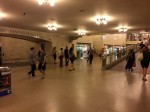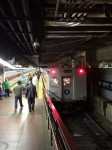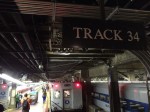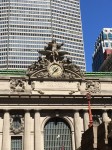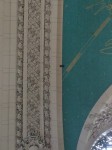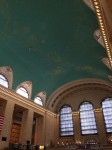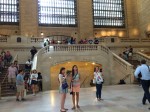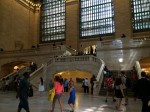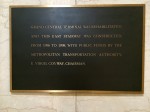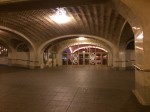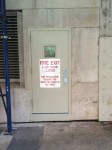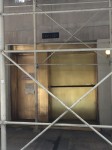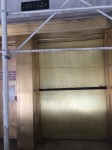Grand Central Terminal
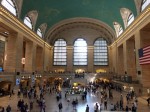 For all its intrigue, innovation, neglect, greatness, and grandeur, Grand Central Terminal is one of my favorite buildings in New York. Its iconic great hall is instantly recognizable, with a swell of people, almost insect-like, dashing for trains, saddled with baggage, embracing friends and family, or gawking upward at the stars painted on the ceiling. One thing it’s not, however, is a station: trains pass through stations but a terminal is where trains come to an end.
For all its intrigue, innovation, neglect, greatness, and grandeur, Grand Central Terminal is one of my favorite buildings in New York. Its iconic great hall is instantly recognizable, with a swell of people, almost insect-like, dashing for trains, saddled with baggage, embracing friends and family, or gawking upward at the stars painted on the ceiling. One thing it’s not, however, is a station: trains pass through stations but a terminal is where trains come to an end.
Before Grand Central Terminal was built by the New York Central Railroad on 42nd Street and Park Avenue, two previous incarnations, Grand Central Depot and Grand Central Station, stood in the same location. The buildings looked considerably different from one another but the tremendous volume of train traffic consistently made it one of the busiest places on Earth. In fact, at the turn of the century, thanks to a newly built tunnel under Park Avenue, steam-powered locomotives arrived at Grand Central Station at a rate of one every 45 seconds. With that incredible frequency, trouble seemed inevitable. On January 8, 1902, an express train from White Plains missed signals in the dark and smoky tunnel and plowed into the back of a commuter train, instantly killing 15 people. Almost immediately after the tragedy, construction began on the present day Grand Central Terminal. By the time the terminal opened at 12:01am on Sunday February 2, 1913, engineers had utilized new electrification technology to power the trains in and out of the station and through the Park Avenue tunnel. Not only was this safer, but air rights over the tracks were sold and several prestigious hotels, apartment and office buildings were built.
By the mid 1950s, as the interstate highway system expanded and Americans favored automobiles, train travel – along with the profits of New York Central Railroad – began a precipitous decline. Several proposals to tear down the dirty, dark, and underutilized relic and erect large modern office towers in its place were considered. In 1968, New York Central Railroad went bankrupt and merged with the Pennsylvania Railroad to form the Penn Central Railroad. Despite receiving landmark designation status by the New York City Landmarks Preservation Commission on August 2, 1967, plans were unveiled to demolish Grand Central’s façade and great hall in order to build a 55-story office tower. In order to proceed with construction, Penn Central had to sue New York City to have the landmark status overturned and in 1975, the New York State Supreme Court ruled in favor of the company. This outraged preservation groups, notably the Municipal Art Society (MAS), which led the fight for the building’s landmark status a decade earlier. The day after the court ruling, the Executive Director of the MAS received a phone call from Jacqueline Kennedy Onassis, who asked what she could do to help. Ms. Onassis was instrumental in boosting public support, culminating in 1978 when the Supreme Court of the United States, in their first ever decision on a matter of historic preservation, ruled in favor of New York City. Grand Central Terminal was saved.
Today, we can enjoy all of the superlatives that make Grand Central Terminal unique:
- It’s the largest train facility in the world in terms of platforms (67 in total).
- Every floor and platform can be reached by ramps or elevators; the terminal is one of the first “stair-free” in the world.
- The term “red carpet treatment” originated in Grand Central, named after the crimson-colored walkway on track 34 that greeted passengers for the 20th Century Limited train from New York to Chicago.
- Track 34 is the most filmed track in Grand Central because the platform is one of the only ones without any columns.
- In 1947, over 65 million people – 40% of the US population – traveled by train through Grand Central.
- Today, on average, over 750,000 people pass through the building, more than the entire population of Boston or Washington, D.C.
- The clock on the façade of the building contains the largest example of Tiffany glass in the world.
- Each month, over 2,000 items are turned in to the lost and found and 80% of them make it back to their rightful owners, one of the best recovery rates in the world.
- The deepest basement in all of New York City is under Grand Central – over 10 stories down.
- Each day, nearly 4 tons of newspaper is recycled in Grand Central, the largest such operation in the U.S.
As for the “secrets,” there are just as many. Over the course of the building’s first 90 years, the astronomical mural on the ceiling became buried under a thick layer of cigarette tar and nicotine. A small black patch on the northwest corner was purposefully left during the restoration to remind everyone just how dirty it was. As for the mural, many of the constellations are done backwards, or as an artist once defensively remarked, “From God’s point of view.”
In 1957, the US Army brought a Redstone rocket to the great hall in an effort to spread excitement about space exploration. A trace of the rocket was left in Grand Central. Looking up at the eastern side of the ceiling, there is a small circular cutout. Contrary to popular belief, the cutout was not made to accommodate the slender needle on the nose of the rocket because it was too tall (the rocket measured about 63 feet and the ceiling height is 275 feet) but rather a cable to stabilize and keep the rocket upright was installed and the cutout was ordered never to be repaired.
Although ramps and elevators are ubiquitous in Grand Central, there are some stairs. The two stately staircases in the great hall are modeled after those of the Paris Opera. Although they appear to be exactly identical on the eastern and western sides of the building, the eastern steps, despite being included in the original plans for Grand Central, are not original. During Grand Central’s recent 1998 restoration, they were constructed using marble from the same quarry in Tennessee used during the building’s 1913 construction. A subtle note to future generations (and archaeologists) that the eastern stairs were built at a different time: they are one inch shorter than their western counterparts.
One of my favorite secrets is just in front of the Oyster Bar restaurant. The archways in the hallway provide excellent acoustics, so much so that by standing diagonally with your back to another person, you can literally hear a whisper from the other side.
The last secret has been discussed at length in newspaper articles, books, documentaries, and even played host to a party by Andy Warhol: track 61. The popular story goes something like this: Franklin Delano Roosevelt wanted to hide the fact that polio had made him wheelchair bound so he would arrive at the Waldorf-Astoria hotel on Park Avenue and 49th Street by train, helped into his Pierce Arrow automobile which had been unloaded from a boxcar onto the platform, driven directly onto a Waldorf freight elevator up to the street and then immediately into the hotel’s parking garage. While it makes for a compelling story, the precision by which this was executed suggests that FDR did this on regular occasions. Historians, however, appear to have a lot of trouble piecing together more than one instance of this possibility. Even more astonishing is the idea that ever since FDR, whenever the president stays in New York (only at the Waldorf, as has been the case since 1931 when Herbert Hoover started the tradition). there is a train waiting for him on track 61 in case of an emergency. I tend to think that the Presidents prefer the hotel because it was the first ever to offer room service or because they’re fans of the Waldorf salad.
What is certain is that track 61 was originally constructed well before the Waldorf-Astoria as a platform for a steam powerhouse that stood mid-block on East 49th Street. The platform was never meant to be used for passenger traffic, despite an article in the New York Times on September 8, 1929, which mentioned the new Waldorf-Astoria “will have a private railway siding underneath the building.” Comparing plans of the hotel with that of the powerhouse show that there was a pipeshaft but no elevator until the construction of the hotel in 1929. Once constructed, the elevator only opened directly onto the street. Today, there is a stairway on East 50th Street that leads directly to the platform. At 101-121 East 49th Street, the shiny doors on the right are the legendary freight elevator and a stairwell, now marked as a fire exit, is on the left.
If you wish to take a tour of Grand Central Terminal, visit their website.
